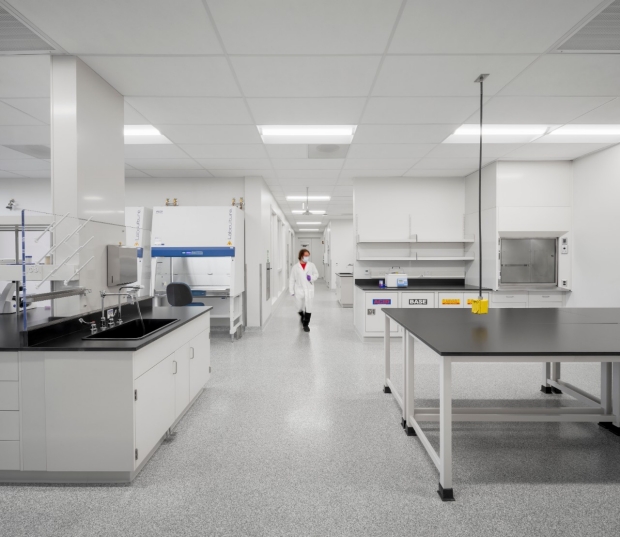R&D Lab

WHAT IS A R&D LAB?
A Research and Development (R&D) lab is a specialized facility or department within a company, organization, or academic institution dedicated to conducting research and development activities. These labs are typically focused on exploring new technologies, products, processes, or solutions in order to advance scientific knowledge or create innovative products and services.
R&D labs often employ scientists, engineers, researchers, and technicians who work collaboratively to investigate new ideas, test hypotheses, and develop prototypes. They may work across various disciplines such as biology, chemistry, physics, engineering, computer science, and more, depending on the goals and focus of the lab.
The primary objectives of an R&D lab can include:
- Innovation: Developing new products, technologies, or processes to meet market demands or solve specific problems.
- Improvement: Enhancing existing products, technologies, or processes to make them more efficient, effective, or competitive.
- Knowledge generation: Advancing scientific understanding through fundamental research and experimentation.
- Intellectual property development: Creating patents, copyrights, or other forms of intellectual property to protect novel inventions or discoveries.
- Commercialization: Transitioning research findings into viable commercial products or services.
Overall, R&D labs play a crucial role in driving innovation and fostering technological advancement in various industries, ranging from pharmaceuticals and biotechnology to electronics, automotive, and beyond.
WHAT IS THE IMPORTANCE OF BUILDING A STRONG R&D LAB?
Building a strong Research and Development (R&D) lab is crucial for several reasons:
Innovation and Competitiveness: A strong R&D lab enables organizations to innovate, develop new technologies, products, or services, and stay ahead of the competition. It allows companies to respond to market trends and customer demands more effectively.
Market Differentiation: Organizations with strong R&D capabilities can differentiate themselves from competitors by offering unique and cutting-edge solutions that address specific market needs. This differentiation can lead to increased market share and higher profitability.
Risk Reduction: Investing in R&D helps organizations diversify their product or service portfolios, reducing reliance on a single product or market. It also allows companies to anticipate and adapt to changes in the business environment more effectively, thereby mitigating risks.
Long-Term Growth: R&D lays the foundation for long-term growth by fostering innovation and creating opportunities for new revenue streams. It enables organizations to explore new markets, expand their customer base, and extend the lifecycle of existing products or services.
Talent Attraction and Retention: A strong R&D lab attracts top talent in science, engineering, and other specialized fields. Talented researchers and innovators are drawn to organizations that prioritize R&D, offering them opportunities for professional growth, intellectual challenge, and meaningful work.
Intellectual Property Development: R&D activities often lead to the creation of intellectual property (IP) such as patents, copyrights, and trade secrets. Building a strong IP portfolio not only protects innovations but also provides opportunities for licensing, partnerships, and revenue generation.
Adaptation to Technological Change: In today’s rapidly evolving technological landscape, organizations must continuously adapt and embrace new technologies to remain relevant. A strong R&D lab enables companies to stay at the forefront of technological advancements and capitalize on emerging opportunities.
Sustainability and Social Impact: R&D can also contribute to sustainability efforts and address societal challenges by developing environmentally friendly technologies, improving resource efficiency, and tackling pressing issues such as healthcare, energy, and climate change.
Overall, investing in a strong R&D lab is essential for organizations seeking to drive innovation, maintain competitiveness, and achieve sustainable growth in an increasingly dynamic and complex business environment.
WHAT FACTORS TO BE CONSIDERED WHILE BUILING A R&D FACILITY?
Building a Research and Development (R&D) facility requires careful consideration of various factors to ensure its effectiveness, efficiency, and suitability for the organization’s needs. Here are some key factors to consider:
Location: Choose a location that provides access to skilled talent, research institutions, suppliers, and potential collaborators. Consider factors such as proximity to universities, technology hubs, and transportation infrastructure.
Space Requirements: Assess the space requirements based on the nature of R&D activities, equipment needs, and the size of the research team. Ensure the facility offers flexibility for future expansion or reconfiguration.
Infrastructure and Utilities: Ensure the facility has adequate infrastructure, including power supply, HVAC (heating, ventilation, and air conditioning), plumbing, and IT infrastructure to support R&D activities and specialized equipment.
Safety and Compliance: Prioritize safety and regulatory compliance by designing the facility to meet industry-specific regulations, building codes, and safety standards. Implement safety protocols, emergency response plans, and adequate ventilation systems for hazardous materials.
Collaboration Spaces: Design collaborative workspaces, meeting rooms, and breakout areas to encourage interdisciplinary collaboration, knowledge sharing, and creativity among research teams. Include amenities such as whiteboards, projectors, and teleconferencing facilities.
Laboratory Design: Tailor the laboratory layout and design to accommodate specific research needs, equipment requirements, and safety considerations. Consider factors such as bench space, fume hoods, storage facilities, and specialized areas for cleanrooms or sensitive equipment.
Environmental Sustainability: Integrate sustainable design principles into the facility, such as energy-efficient lighting, renewable energy sources, water-saving fixtures, and sustainable materials. Consider obtaining certifications like LEED (Leadership in Energy and Environmental Design) to demonstrate environmental responsibility.
Security: Implement robust security measures to protect intellectual property, sensitive data, and valuable equipment. This may include access control systems, surveillance cameras, cybersecurity measures, and physical security barriers.
Budget and Cost Management: Develop a realistic budget that accounts for construction costs, equipment procurement, operational expenses, and ongoing maintenance. Monitor costs closely throughout the project to avoid budget overruns and ensure cost-effectiveness.
Future Growth and Flexibility: Anticipate future needs and design the facility with scalability and flexibility in mind. Incorporate modular design elements, adaptable spaces, and infrastructure that can accommodate evolving R&D requirements and technological advancements.
Accessibility and Inclusivity: Ensure the facility is accessible to individuals with disabilities and promotes inclusivity and diversity. Consider factors such as wheelchair accessibility, ergonomic workstations, and accommodations for individuals with sensory impairments.
By carefully considering these factors during the planning and design phases, organizations can create a state-of-the-art R&D facility that fosters innovation, collaboration, safety, and sustainability while meeting the organization’s strategic objectives and budgetary constraints.
